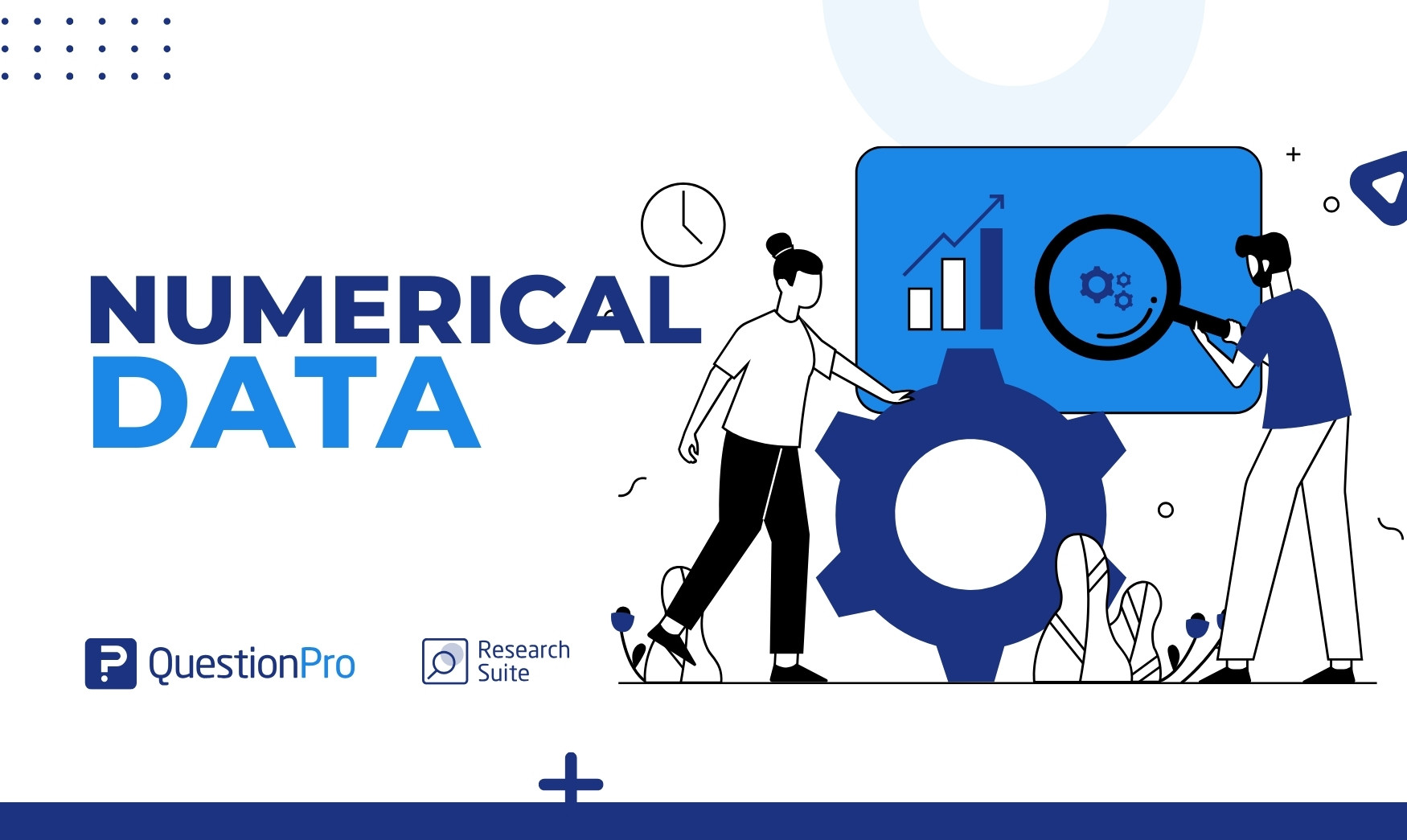
In the vast world of data, numerical data stands out as one of the most essential and versatile types. It is a fundamental component of our everyday lives. It’s fundamental in statistical analysis, scientific research, business intelligence, and many other fields.
In this blog, we’ll explore numerical data, its key characteristics, and various types and provide real-world examples to illustrate its significance.
What Is Numerical Data?
Numerical data, as the name suggests, consists of numbers. It represents quantitative information and can be measured and counted. This data type is often used to perform mathematical operations and statistical analyses.
Using data population prediction models, demographers can estimate future population growth more accurately. It is a cornerstone in making informed decisions, drawing conclusions, and discovering patterns. A numerical variable is something blocking an infinite value.
For example, age and weight test results. Numerical variables are considered continuous variables if they have continuous data characteristics and are.
Characteristics of Numerical Data
Understanding the characteristics of numerical data is crucial for working with it effectively:
- Quantifiability: It can be counted, measured, and written as a number for numerical variables.
For example, a person’s height, the substance’s temperature, or the number of products sold. - Arithmetic Operations: It can undergo arithmetic operations such as addition, subtraction, multiplication, and division. This allows for various mathematical analyses and calculations.
- Ordered: It often has a natural order.
For instance, numbers 1, 2, 3, and so on represent a clear and meaningful progression. - Continuous or Discrete: It can be either continuous or discrete. Continuous data can take any value within a range, while discrete data can only take specific, distinct values.
- Units of Measurement: It is associated with units of measurement, such as inches, meters, kilograms, or dollars. These units give context and meaning to the numbers.
Types of Numerical Data
Numerical data variables can be further categorized into two main types: discrete and continuous data.
1. Discrete Data
Discrete data consists of distinct and separate values. These values are typically integers and do not have fractional or decimal components. Some common examples of discrete data include:
- Number of Students in a Class: You can’t have a fraction of a student; it’s a whole number.
- Number of Cars in a Parking Lot: You can’t have half a car.
- Number of Customer Complaints: Complaints are usually counted as whole numbers.
Discrete data is often represented as a count or a whole number, and it’s suitable for tasks that involve counting and enumeration.
2. Continuous Data
Continuous data, on the other hand, can take any value within a specific range. These values can be integers or decimals. Some examples of continuous data include:
- Height of Individuals: Heights can be any value within a specific range and have fractional components (e.g., 5.7 feet).
- Temperature: Temperature can be measured with decimal values, taking any value within a range.
- Weight of Products: The weight of products can vary continuously and include decimal values.
Continuous data is suitable for measurements with infinite possibilities within a given range. It is often used in scientific and engineering applications.
Importance of Numerical Data
Numerical data is critical for decision-making and analysis. Here’s why it’s so important:
- Quantitative Insights: It provides quantitative insights, making it easier to perform calculations, comparisons, and statistical analyses.
- Objective Decision-Making: It helps make objective decisions by reducing the impact of subjectivity. It can be analyzed without bias.
- Predictive Modeling: It is often used in predictive modeling to forecast future trends, whether in finance, weather, or customer behavior.
- Quality Control: In manufacturing, quality control helps to monitor and maintain product quality by measuring and analyzing various parameters.
- Data-Driven Decisions: Businesses and organizations need to stay competitive and make strategic decisions in a data-driven world, which also helps in doing that.
Examples of Numerical Data
Now that we’ve covered the characteristics and types of numerical data. Let’s explore some real-world examples to illustrate how data is used in various fields:
Business and Finance
In the financial world, numerical data is king. Stock prices, currency exchange rates, sales figures, and profit margins are all represented numerically. Investors and analysts rely on this data to make informed decisions about buying, selling, or holding investments.
Healthcare
Medical data, such as patient vital signs, laboratory results, and prescription dosages, are all numerical in nature. Healthcare professionals use this data to diagnose and treat patients, monitor their progress, and make informed decisions about their care.
Scientific Research
Scientists collect data in vast amounts to conduct experiments and draw conclusions. This data can include measurements of temperature, pressure, particle counts, and many other variables, depending on the specific field of research.
Difference Between Numerical Data vs Categorical Data
The differences between numerical and categorical data can be huge. Here’s a comparison between numerical data and categorical data present:
| Topic | Numerical Data | Categorical Data |
| Nature | Quantitative, measurable, and represented as numbers. | Qualitative, representing categories or labels. |
| Example | Age, height, temperature, income, number of children. | Gender, color, car makes, types of fruits. |
| Type | It can be continuous (infinite values) or discrete (specific values). | Discrete, usually with finite, distinct categories. |
| Mathematical Ops | Can be subjected to mathematical operations (e.g., addition, average). | Not suitable for mathematical operations. |
| Measures | Described using measures of central tendency and dispersion (mean, median, range, variance). | Described using counts, percentages, and mode. |
| Representation | Typically displayed in numeric format. | Represented as labels or categories. |
| Examples of Analysis | Regression analysis, correlation, mean comparison, t-tests. | Frequency distribution, chi-squared tests, bar charts. |
How QuestionPro Can Help in Collecting Numerical Data
QuestionPro is a survey and data collection platform that can assist in collecting numerical data efficiently. It offers various features that facilitate the collection of numerical data, such as
- Customizable Surveys: QuestionPro allows you to create custom surveys with specific questions tailored to collect numerical data, such as ratings, rankings, or numerical analysis responses.
- Multiple Question Types: It offers a range of question types, including multiple-choice, Likert scale, numeric input, and matrix questions, which are suitable for collecting numerical responses.
- Skip Logic and Branching: You can use skip logic to guide respondents to relevant questions, making the survey experience more efficient and reducing non-applicable numerical data entries.
- Piping and Variables: QuestionPro supports using variables and piping, enabling you to display calculated values or pre-filled numerical data based on respondents’ previous answers.
- Data Validation: It provides options for setting up data validation rules to ensure that numerical values data entered by respondents meet specific criteria or constraints.
- Integration: You can integrate QuestionPro with other data analysis tools, making it easy to analyze and visualize the collected continuous data.
- Real-time Analytics: QuestionPro offers real-time reporting and analytics, allowing you to monitor the numerical data collection process and gain insights as responses come in.
- Mobile Optimization: The platform is mobile-responsive, making it convenient for respondents to complete surveys on various devices, which can lead to higher response rates.
Conclusion
Numerical data is the foundation of data-driven decision-making in various domains. Its characteristics, types, and real-world examples demonstrate its versatility and importance. It’s quantitative data nature that allows for in-depth descriptive statistics, statistical analysis, and insightful decision-making.
Whether you’re an analyst, scientist, business owner, or simply someone interested in understanding the world through data, a solid grasp of this data is essential.
Working with this type of data is a valuable skill in a world increasingly reliant on data, empowering individuals and organizations to make informed choices and drive progress. So, next time you encounter a numerical dataset, remember the wealth of information it holds and the insights it can unlock.
QuestionPro is a versatile tool for efficiently collecting, managing, and analyzing data through surveys and questionnaires. It streamlines the process and provides the necessary features to make data collection straightforward and insightful.







